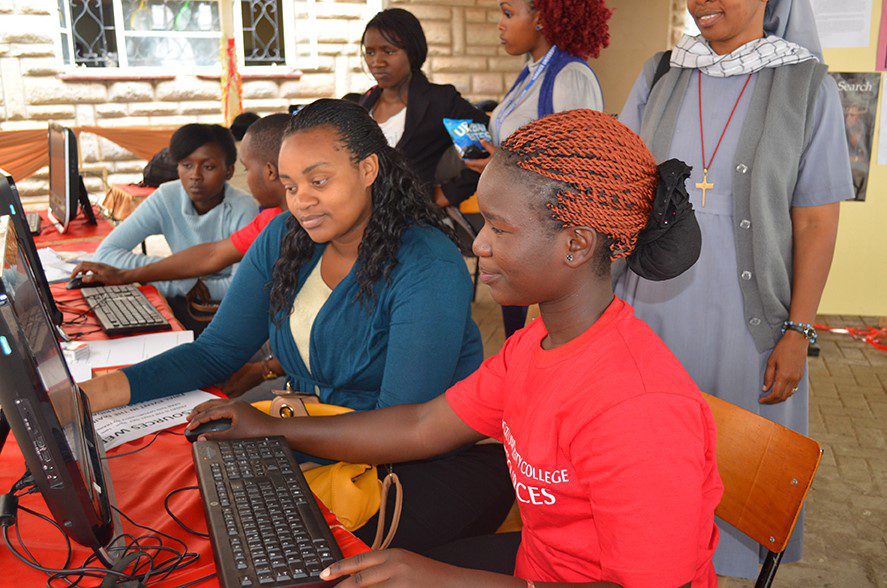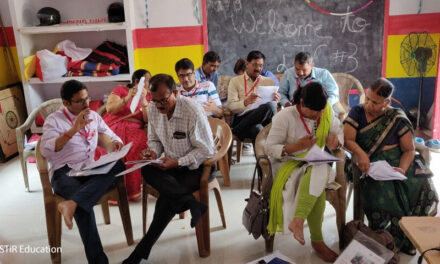This blog was written by INASP digital learning specialists Joanna Wild, Andy Nobes, Veronika Schaeffler and Ravi Murugesan. As the world looks to online alternatives to previously face-to-face teaching, collaborating and information exchange, they share a roundup of learning and advice. This blog was originally published on the INASP website on 25 March 2020.
Over recent weeks a huge number of face-to-face conferences, workshops and training events have been cancelled or postponed. This has massive implications for the important efforts to support and strengthen research for development, which are vital in tackling the current world crisis and responding better with research and evidence in the future. Many event organisers are exploring digital alternatives and schools and universities worldwide are thinking about how to deliver curricula in other ways.
Sharing our learning
INASP has been delivering and facilitating online courses, communities of practice, mentoring and other online approaches to support teaching and learning and capacity development for researchers, students and professionals across the research and knowledge system for over 10 years. Last year we shared how these approaches align with the Principles for Digital Development. Over this time, we have been reflecting on and learning from our experiences and the experiences of the learners.
We wanted to re-share some of what we have learnt to help research and knowledge organisations across the globe as they think about transforming their normal face-to-face activities to an online environment:
Consider audience and context
- As Joanna Wild outlined in Online learning: five ingredients of success, it is important to know the audience, their level of knowledge and language skills and what spaces they prefer to be in online. It is also important to understand the possible limitations of bandwidth and IT capabilities, as well as digital literacy, of users. Users will be less willing or able to engage if the interface is too confusing or unfamiliar or if they don’t have a good enough internet connection to watch large videos.
Design for online
- It is also important to not just put face-to-face materials on the internet but design and adapt for the online environment so that we can use the benefits of online learning and communication. With online, learners can learn at their own pace and re-visit recorded discussions. Materials can be made accessible to learners with special needs and people from different regions can connect. It can also benefit people who may feel sidelined in face-to-face interactions; shy people and people who need more time for thinking things through may get more chance to contribute.
- There are many aspects to consider when designing for an online environment. We have developed a scoping and design decision tool that helps us ask the right questions to understand the audience and their needs and expectations better, and to make the right design decisions.
- Online communication differs from face-to-face communication. Non-verbal communication like facial expressions, gestures and tone of voice is often difficult to transfer, although video and good audio can help, as can emoticons. And in face-to-face communication, a teacher would give further information to the students about how to use learning material; this needs to be replaced by explicit instructions provided with the material.
- Both synchronous and asynchronous communication approaches are useful in online engagement. It is important to decide what is most appropriate for the purpose and the audience. Whilst synchronous learning via video/webinar can be a popular and important component of online learning, it can be biased against some international participants, different time zones, people with family commitments, and those who do not speak English as a first language, and so it’s important to balance this with asynchronous activities and engagement. ‘Facilitator presence’ and social interaction can be also be done through thoughtfully designed asynchronous activities.
Build community
- Social presence helps learners know that they aren’t alone in their learning journey and that they can learn and navigate meaning together. Well-planned peer learning activities (such as having their work peer assessed) and facilitated group discussions can aid this kind of learning. Learners should feel welcome to post any queries or thoughts in course discussion forums. There should be somebody on hand to provide answers or share ideas, whether they are from their peers or through volunteer moderators or ‘guest facilitators’ (see Creating a successful MOOC for academics in low-resource settings).
- Joanna Wild recently reflected on aspects of successful engagement in Building sustainability of self-supporting communities: INASP’s approaches. Andy Nobes also shared some experiences of building online journal clubs in the AuthorAID project and how the momentum of the clubs has inspired some participants to step up to take on aspects of facilitation and moderation within the groups (see Online journal clubs spark active discussions and new ways of exploring literature).
Maintain engagement
- People engage and learn online in different ways from in-person, with more breaks and competition for attention. Effective online engagement includes regular engagement and regular opportunities to test understanding, for example with short quizzes in online courses or regular activities in an online journal club. It is important to have clear communication of learning goals and expected outcomes and provide certificates to recognise participants who complete courses, as well as to recognise the role of the facilitators. And there are some fun ways to support engagement. In our AuthorAID research writing courses, for example, we always see good engagement in an optional Capture your Research photo competition.
Be inclusive
- Online learning offers an important opportunity to increase inclusivity of harder to reach demographics and locations. Our AuthorAID courses are accessed by people in countries and regions affected by countries and regions affected by conflict or unrest – for example Yemen and the Somali regions – and by displaced people. This has helped us think about how best to serve learners in less accessible situations. Considerations such as those discussed above around working with low bandwidth and options for asynchronous learning can help meet learners in more challenging situations.
- We have seen that online courses tend to have a better gender balance than face-to-face training. It can be easier for people with caring responsibilities to attend courses that they don’t have to travel to and that are more flexible around childcare. Online courses tend to remove some of the biases of academic hierarchy compared with face-to-face activities.
- It is also important to think about users who are differently abled, for example, through choice of images, colours and fonts, using screen reading technology, adding subtitles and using alt text on images.
Monitor well
- A final component to get in place in setting up online teaching is monitoring and evaluation. Monitoring, evaluation and learning underpins all INASP’s work and is enshrined in our digital strategy. We can’t know if approaches are successful without gathering data and understanding how things are used. Who is completing? Who is dropping out? Which tasks do they seem to find hard?
Moving forwards
Building on these core building blocks and the monitoring of how online teaching and learning approaches are being used allows approaches to evolve and become more sustainable.
Adapt to change
- While there is a short-term imperative to identify online alternatives to face-to-face events, it’s important not to forget the vital issues of sustainability and local ownership that are the bedrocks of international development. The option for enabling local customisation and ownership is a key ingredient in sustainability (see Online learning: five ingredients of success).
- The mode of delivery can be adapted to the available capacity and context. Similarly, content can be adapted for different audiences. An example of adapting our approach to online learning in response to a particular context came in 2014 with the outbreak of Ebola in Sierra Leone and widespread closure of universities. We had just started working with partners in the country to support face-to-face training for researchers in using electronic resources. During the epidemic, we supported partners to provide online training instead. This led to our first offline implementation of Moodle in recognition of internet issues faced by some users who were not based in Freetown. This feature, which enables users to download lessons and quizzes for using offline, has since been a useful feature for many researchers who want to continue courses while away doing field work.
- Recognising that, in many LMIC countries, mobile access is the most prevalent route to the internet and that smartphone use spans the generations, we also ensure that our online courses and other online learning opportunities are mobile optimised. See Creating a successful MOOC for academics in low-resource settings.
Be flexible
- In 2018 we introduced ‘learning pathways’ to our AuthorAID MOOCs. This approach recognised that there are some core components that everyone on a course needs to do but that there will be other topics that may be more relevant to specific people or at specific times. See Increasing the flexibility of AuthorAID MOOCs with learning pathways. We took this approach further with our online courses for journal editors where all participants can pick whichever modules they need to address their own skills gaps, and gain completion certificates for those modules.
Customise for sustainability
- Building on this flexibility, over the past year we have developed a customisation option to our AuthorAID MOOCs. This provides organisations with the opportunity to have a dedicated space to engage and focus on their research groups, society members or network. This MOOC sponsorship model also provides an opportunity to support the wider training of disadvantaged researchers and to keep it free and open at the point of use. We have seen groups use these dedicated spaces in a range of ways to provide extra modules, more subject-specific teaching and additional learning materials. As the world’s educational and research institutions think how to respond to the current crisis, we are having some interesting conversations about other ways that this could be used.
Moving from face-to-face teaching to online is not simple or quick to do well but, if done right, it can be very effective. For example, the AuthorAID research writing online courses have to date trained over 11,000 researchers, with a course completion rate of around 50%. And participants share positive feedback and evidence of putting their learning into practice.
If you would like more information about any of these areas or want to chat with INASP’s digital learning and capacity development experts, please get in touch: jwild@inasp.info





